
bringing nature, nurseries and gardeners together June 20, 2019
|
|
Austin Butterfly Forum: join Paula Sharp and Ross Eatman for a talk and slide show about their stunningly beautiful photo-graphy of the Wild Bees of the National Butterfly Center. Monday, 7 p.m. Zilker Botanical Garden. A.B.F.❦
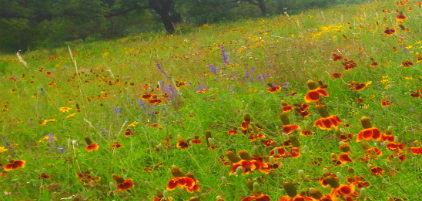
Nature Nights: Life on the Prairie is the focus of tonight's events at the Wildflower Center. Free entry: 6 - 9 p.m. Next Thursday - birds of prey and reptiles. LBJ ❦
___________________________________________________
Natural Gardener news: from tomorrow through Sunday one gal. Duranta 'Sapphire Showers' on sale for $5.99 (reg. $8.99); and 20% off all pottery. Plant propogation class this Saturday at 10 a.m. with Stacie. TNG ❦
___________________________________________________
Texas superstar plants: Laura Holland will introduce various species that can take the heat at the monthly meeting of the Garden Club of Austin. 7:30 p.m. June 27, Zilker Botanical Garden. TGCOA❦

TomatoFest roundup: Congrats to Grand Champion Mike Brent whose chocolate sprinkle cherry tomatoes won over all of the judges. Other winners: Slicer: Larry Peoples: Earl's Faux. Paste: Tim Miller: Yellow Pear. Weight: Larry Peoples - Cherokee Purple. (Judges above l - r Ave Bonar, John Kunz and Austin Garden editor Darrel Mayers hard at work!)
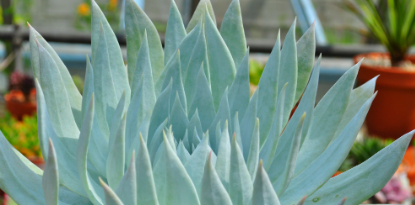
Succulent poaching: earlier this month three South Koreans were charged with attempting to export $600,000 in live Dud-leya succulents pulled from the ground of state parks in North-ern California. NBC Los Angeles. A 5" plant can fetch $40 - $50 in the Asian market according to Earth Island Journal. ❦
___________________________________________________
Gazpacho plus: salmorejo, the chilled Spanish tomato soup, has been called gazpacho's richer, deeper cousin. It consists mostly of tomatoes and bread, topped with a hard-boiled egg, and some ham, and is delicioso on a summer evening. (Best to make a day ahead.) Food & Wine ❦
___________________________________________________
The Austin Garden is sponsored by Hays Free Press
 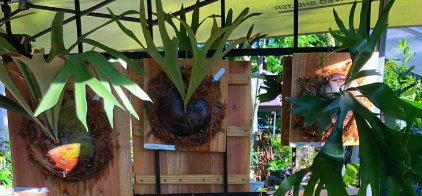
Central Texas Gardener: learn all about fantastic ferns from Darla Harris (Fern Plantation Nursery); on tour a visit to Pat and Tom Ellison's enviro-friendly yard. Daphne demonstrates how to handle plants with the dreaded rose rosette disease. Saturday 4 p.m. Sunday 9 a.m. KLRU ❦
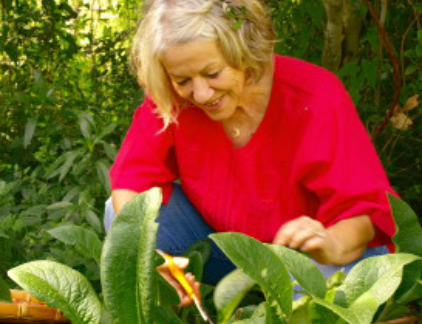
Six Medicinal Herbs of Texas
by Ellen Zimmerman
I live in the Driftwood area south of Austin and I have become acquainted with many, many native plants, herbs and trees over the years. Today I am going to introduce you to several herbs that are all useful and precious in their own special way.

Echinacea (Echinacea purpurea) The purple coneflower is a beautiful, stately landscape and medicinal plant. You can use this herb to boost your immune system, and also as a preventative; i.e. when traveling to avoid getting sick, and to assist your own healthy immune system in fighting a cold, flu or infection. It can also help to ease nausea.
You can use the root, flower, leaves and seed of this perennial as a tea or tincture, and the medicine tingles in your mouth while making its magic. Scatter fresh seeds in October or plant transplants in full to part-sun.

Slippery Elm (Ulmus rubra) I have seen this plant growing along creeks and streams here in Austin. The inner bark of the trunk can be harvested and used as a soothing remedy for inflammation.
The strong demulcent properties make it useful for gastro-intestinal irritation and for the throat, lungs and kidneys. (Demulcent herbs relieve irritation of mucous membranes in the mouth by forming a protective film.)
It can be used externally as a poultice for ulcers and abscesses and its highly nutritional value make it useful as a food during convalescence.
You can plant a small sapling in your yard and nurture it as a lovely shade tree. I’ve planted two, and the one in my garden is at least 20 feet high and gorgeous.
The potent remedy of the inner bark should be harvested from a 10-year-old tree. We need to wait for Slippery Elm. Also known as Indian Elm, Moose Elm, Sweet Elm, Soft Elm and more, Slippery Elm is a soothing remedy for inflammation.
I also like it for respiratory issues, and use it as my demulcent herb in bronchial and kidney teas. During convalescence, Slippery Elm gruel was often used as a nutritive food.
In times of famine, early American settlers used it as a survival food. George Washington and his troops survived for several days on Slippery Elm gruel during the bitter winter of 1777 - 78 at Valley Forge.
I mixed it with oatmeal and fed it to my husband after an illness and it is really quite good with honey or maple syrup added.
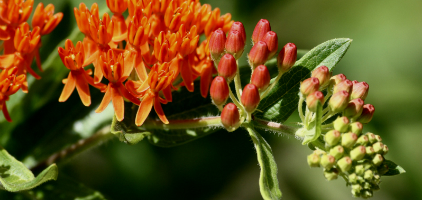
Butterfly Weed (Asclepius tuberosa) This spectacular flower, which provides a favorite home for the Monarch butterfly, is sadly at-risk in the wild. We can easily grow Butterfly Weed from seed, sown in the fall, or it can be propagated from root cuttings.
This showy Milkweed is used as a diaphoretic (promotes sweating), antispasmodic, expectorant and a tonic. One of its common names is Pleurisy Root, and it was often used for lung and bronchial congestion, and to relieve the sharp chest pains of pleurisy.
Another local milkweed I love is Inmortal, AKA, Antelope Horns (Asclepius asperula) which grows wild on my front property where it is dry and the soil is shallow.
It seems to thrive hardily and is used medicinally. Mid-wives use Asclepius asperula to facilitate childbirth. According to herbalist Michael Moore, the aerial part of Inmortal is good for the respiratory system and the heart. This plant is elusive and oh so beautiful!!
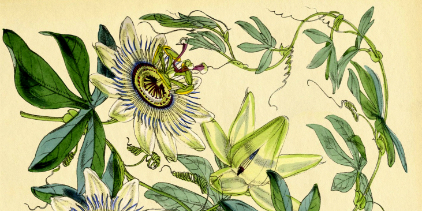
Passionflower (Passiflora incarnate) The leaves and flowers of this easy-to-grow climber are used as an herbal sedative. It is effective and non-addictive, and can be used to treat insomnia, regulate blood pressure, and as a pain killer. It is best to plant a transplant in the sun in early spring.
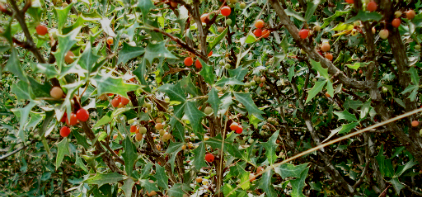 Agarita (Mahonia trifoliolata) This common wild plant grows abundantly in fields, meadows and wooded areas. The stems and bright yellow roots contain high levels of berberine, and are known for their anti-viral and digestive properties. From the tasty red berries you can make a delicious jam. (Native Americans used it for toothaches.) Great for digestive health and liver support.
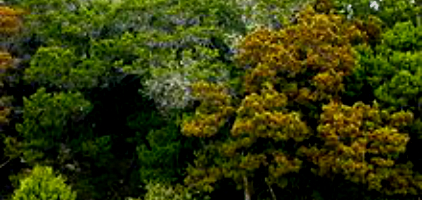
Cedar (Juniperus ashei) This prevalent hardwood tree has useful blue berries that act as a urinary antiseptic. It can also be used for indigestion, colic and flatulence. Eating one juniper berry a day prior to cedar fever season can help ease the uncomfortable symptoms of Cedar Fever. ❦
____________________________________________________
Ellen Zimmerman, a Certified Herbalist, founded EZ Herbs in 1995. She is also founder and director of the Austin School of Herbal Studies, and a range of herbal products are available at ezherbs.net. (The content of this article is for educational and informational purposes only, and is not intended as medical advice.)
|
 It's About Thyme Legacy Publications.
Contact newsletter editor Darrel Mayers with any ideas for articles or interesting links at internationalrain@yahoo.com (hitting 'reply' to this email won't work) |
|
|